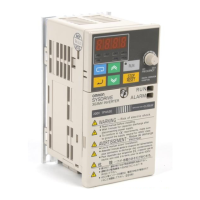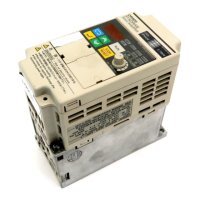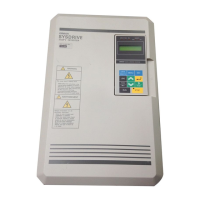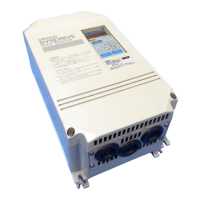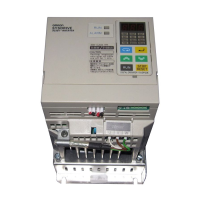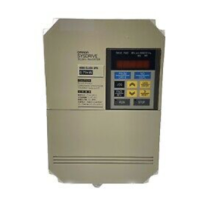8-20
H PID control diverges.
• No feedback is input.
If the detected value is 0 with no feedback input, the PID control function will not operate. As a result,
the output of the Inverter will diverge and the motor will increase its speed up to the maximum fre-
quency.
Check that the set value in n164 for PID feedback input block selection conforms with the actual
input and that the PID constants are set properly. Refer to 6-3-6 PID Control Settings.
• Level adjustments of the target and detected values are imperfect.
The Inverter in PID control adjusts the deviation between the target and detected values so that the
deviation will be zero. Therefore, the target and detected values must be adjusted so that they will
have the same input level. Set the detected value gain in n129 after making the proper level adjust-
ments.
• The relationship between the output frequency and detected value of the Inverter is opposite.
PID control will result in diversion if the detected value decreases when the output frequency of the
Inverter increases. If that happens, set n128 for PID control selection to negative characteristics
(e.g., if 1 has been set, change it to 5).
8-2-13 Inverter Vibration in Energy-saving Control
• The energy-saving settings are incorrect.
Check the frequency of vibration.
If the frequency coincides with the power averaging time in n143, the Inverter is not in smooth probe
operation. Set the probe operation voltage limit to 0 in n144 to disable the probe operation of the
Inverter or reduce the set values of n145 (100% probe-control voltage step) and n146 (5% probe-
control voltage step) so that the voltage change range will be narrower.
8-2-14 Motor Rotates after Output of Inverter is Turned OFF
• Insufficient DC Injection Braking Control
If the motor continues operating at low speed, without completely stopping, and after a deceleration
stop has been executed, it means that the DC injection braking is not decelerating enough.
In such cases, adjust the DC control as described below.
S Increase the parameter in n089 for DC injection braking current.
S Increase the parameter in n090 for DC injection braking-to-stop time.
8-2-15 Detects OV (Over voltage) and Stalls when Motor Starts
• Insufficient DC Injection Braking Control at Startup
Generation of OV and stalling can occur if the motor is turning when it is started.
This can be prevented by slowing the rotation of the motor by DC injection braking before starting
the motor.
Increase the parameter in n091 for startup DC injection braking time.
Maintenance Operations Chapter 8
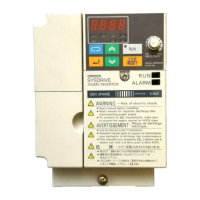
